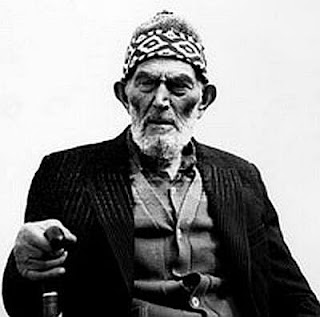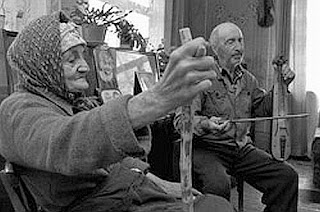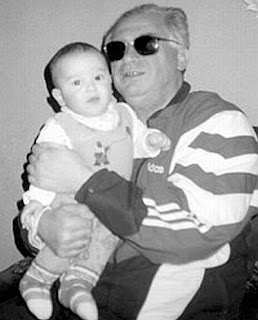
Interview with Sergey Vardanyan, philologist, deputy-chairman of the NGO Hamshen Compatriotic-Charity, editor-in-chief of the monthly Hamshen Voice
According to prominent historiographers Ghevond and Hovnan Mamikonyan, in 789-790 during the Arab domination of Armenia, Shapuh Amatuni, his son Hamam, and 12,000 of their people moved from the Ayrarat Province to the Southern Coast of the Black Sea, then part of the Byzantine Empire. . . Hamam Amatuni built a town and named it Hamamashen, which evolved into Hamshen. The Hamshen Armenian princedom was semi-independent during the domination of the Byzantine and Trebizond Empires, Timur Lenk and the Turkmens. But by 1489, the Hamshen Armenian princedom, which had survived for 700 years, had become a part of the Ottoman Empire. In spite of everything, the Hamshen Armenians have maintained their semi-independent position.
- Mr. Vardanyan, it is well known that the Hamshen Armenians were subjected to the wave of Islamization as well. When did this happen and how many Hamshen Armenians adopted Islam?
- The history of the Islamization of the Hamshen Armenians is very poor and few facts have been preserved. The reason is that first, Hamshen was located on the outskirts of Armenia and second, a lot of material was lost or destroyed after 1915. This is true of the history of all of Western Armenia. According to the available information, we can assume that the process of Islamization was rapid in the Hamshen region at the beginning of the 18 th century. Some Armenians forcedly converted to Islam, became Muslim on the surface in the hope that the wave would pass and they would return to Christianity. Some of them did indeed come back. Many people died in the process, some escaped to other provinces. There are no numbers. Turkish documents don't mention how many Muslims living in a given village had been Armenian, Greek or of other nationality before. Interestingly, according to Yeremeyev's book The Origin of the Turks , Turks (including Azerbaijanis) are the only nation that has changed their race. That is, being Mongoloid they transformed into Caucasians by race. This happened owing to the Armenians, Persians, Greeks, Slavs and other nationalities assimilated by the Turks. Some of the assimilated people don't even remember what nationality they belonged to. The newly converted ones, of course, knew all that, but the succeeding generations had lost those memories. Some of the Hamshen Armenians have preserved their language up to now. Those who speak Armenian know that their ancestors were Armenians who adopted Islam. How that happened is another issue. Clearly, Turks would say that they adopted Islam voluntarily but scholars say that the conversion was the result of massacres.

- How many Armenian-speaking Muslim Hamshen Armenians are there?
- There are between 25,000 and 30,000 Armenian-speaking Muslim Hamshen Armenians in the Khopa region of Turkey. But the majority of the Bash Hamshentsis living in Hamshen proper have forgotten about their Armenian origin. Bash Hamshentsis live also in Istanbul, Germany and other countries.
- Living close to the Turkish-Russian border the Hamshen Armenians managed to escape to Russia by sea during the 1894-1923 massacres; moreover, they fought back against the perpetrators.

- Before the 1895 Trabzon massacres the Hamshen Armenians were thinking about escaping from Turkey. During this period they left for the Russian shore - to Abkhazia, Sochi - aboard ships. In 1915 the tide of flight rose. At the same time the resistance, or Fedayee, movement originated. Christian Armenians from the Trabzon Province went to the mountains and created defense units. Some families of Muslim Armenians were massacred too because they spoke Armenian and the Turks considered them unreliable. Armenians fought from 1915 to 1923. The last refugees and fedayees reached the Russian shores in May 1923. This was an unprecedented eight-year struggle. But this struggle hasn't been studied adequately. I have many documents in my personal archive; there are documents in other places too but there are no means to publish them.
- Are there any figures regarding the Hamshen Armenians who fell victim to the massacres?
- It's difficult to cite any numerical data on those massacred. According to an Armenian priest who witnessed the 1895 massacres and who was instructed by Turks to bury the bodies of the victims, he himself didn't know the numbers. This data is perhaps preserved in the Turkish archives.
- What happened to the Hamshen Armenians who had left for Russia?
- Russia received the Christian Hamshen Armenians warmly since it had the problem of populating the Black sea coastal regions. Armenians who were used to marshlands were able to develop the tobacco-growing industry there. There are also Muslim Hamshen-Armenians in Russia and Central Asia who now number some three or four thousand. This is how they got to Central Asia – after the 1921 demarcation of the Russian-Turkish border, several villages populated by Muslim Hamshen-Armenians and people of the Laz nationality found themselves within the boundaries of the Soviet Union (in Ajaria) and in 1944 by Stalin's order, along with Meskheti Turks and other local Muslim, the Hamshen Armenians were deported to Central Asia. In 1984 and in 1987 I traveled to Kazakhstan, Uzbekistan and Kyrgyzstan to study the ethnography and history of the Hamshen Armenians. In our conversations the elderly remembered the days of the Genocide.
In the village of Chirkino in the Chikmend Province of Kazakhstan, Iskhak Karaibrahimov (Tchermakyan, born in 1888 in the village of Gonio in Ajaria) told me that he gave refuge to eighteen Armenians who had escaped from Ardvin and other places and later on helped them to go to safer places through the forests.
In Chirkino I also met Khaula Shabanoglu (born in 1898 in the village of Chaushli), who saw the barbarity with which Turks were killing the Ardvin Armenians. According to his story, the Turks gathered the Moslem Hamshen Armenians but later on set them free, apparently, as Muslims.
In Kyzyl-Kiya in Kyrgyzstan Dursun Karabajakoglu (born in 1905 in Gonio, Ajaria) told me that during World War I his family moved to Charchakhana where his uncles lived. In 1915 their relative Osman Musoglu, wishing to stay away from the war, decided to move from Charchakhana to Constantinople, but because he spoke Armenian aboard the ship Turks slaughtered his entire family and threw the bodies into the sea. According to Dursun Karabajakoglu, though he was little at the time, all the children in the village knew that it was dangerous to speak Armenian. The Turks would say that after the Christian Armenians were massacred, the Muslim Armenians' turn would come, because they were Armenian after all.
- Do you keep in touch with Hamshen Armenians in Central Asia and other regions?
- In those days I invited Hamshen Armenians from Central Asia to visit Armenia or I visited them. I wanted to arouse national self-consciousness in them. I wanted to bring some 30 Moslem families from Central Asia and some 100 Christian families from Abkhazia. But the plans were interrupted because of the 1988 earthquake and the Karabakh movement. The Muslim Hamshen Armenians in Central Asia have no relatives here and that is why there are no contacts. And to do research there, resources are needed. But I must say that in 1984 Muslim Hamshen Armenians were moving from the Central Asia to the villages of the Apsheron region of the Krasnodar Province because Central Asia was an alien environment for them. In Krasnodar the Christian and Moslem Hamshen Armenians differ from each other mostly in their religion.

But the Soviet generation of the Muslim Hamshen Armenians have weak religious feelings because they hardly communicated with mosques, mullahs, or the Koran. Today we have close contacts with the Hamshen Armenians of Abkhazia and Krasnodar. The NGO Hamshen sends them most of the copies of the Voice of Hamshen monthly free of charge. Those who live in Armenia visit them and vice versa. I have also contacts with Hamshen Armenian truck drivers who bring goods from Turkey. Sometimes I ask for their help for my research – related to the dialect and to the local folklore.
- So today, the Hamshen Armenians mainly reside in Turkey, the Krasnodar province, Abkhazia, Central Asia and Armenia. Do we know how many Hamshen Armenians there are in our country?

- In the 1980s and 1990s we counted about 10,000 people in Armenia. This number is relative since the notion of Hamshentsi is very broad, like all other similar notions. When we say Hamshentsi we should mean those who left Hamshen proper or are their descendants and speak the Hamshen dialect. But our organization's charter states that it unites the Armenians of Abkhazia, the Krasnodar and the Trabzon provinces and their descendants and also those who want to contribute to the preservation Armenians in these regions. In other words, a Sasuntsi can become a member of the organization. Unfortunately, at present barely a hundred of people attend our conventions. Many people emigrated, but there are still quite a number of Hamshentsis in Armenia.
Interview by Vahe Sarukhanyan
Photos by Sergey Vardanyan and Ruben Mangasaryan
April 30, 2007 Copyright © 2002-2007 Hetq Online





0 comments:
Post a Comment
Please Update/Correct Any Of The
3700+ Posts by Leaving Your Comments Here
- - - YOUR OPINION Matters To Us - - -
We Promise To Publish Them Even If We May Not Share The Same View
Mind You,
You Would Not Be Allowed Such Freedom In Most Of The Other Sites At All.
You understand that the site content express the author's views, not necessarily those of the site. You also agree that you will not post any material which is false, hateful, threatening, invasive of a person’s privacy, or in violation of any law.
- Please READ the POST FIRST then enter YOUR comment in English by referring to the SPECIFIC POINTS in the post and DO preview your comment for proper grammar /spelling.
-Need to correct the one you have already sent?
please enter a -New Comment- We'll keep the latest version
- Spammers: Your comment will appear here only in your dreams
More . . :
http://armenians-1915.blogspot.com/2007/05/Submit-Your-Article.html
All the best